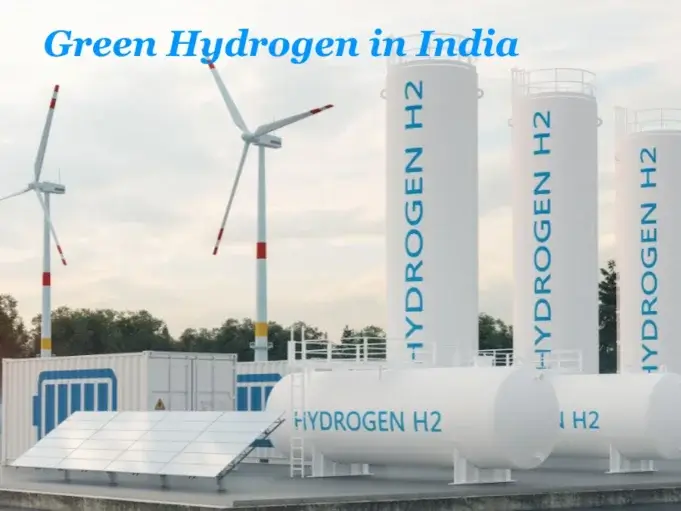As the world grapples with the urgent need to combat climate change and transition to renewable energy sources, the concept of green hydrogen has emerged as a game-changer. Green hydrogen, produced through electrolysis powered by renewable energy, offers a carbon-neutral alternative to traditional fossil fuels. In India, the potential of green hydrogen is being recognized, and concerted efforts are underway to harness its power and drive a sustainable future.
What is Green Hydrogen? Hydrogen, the most abundant element in the universe, has long been recognized as a versatile energy carrier. However, the conventional production of hydrogen relies heavily on fossil fuels, resulting in significant carbon emissions. Green hydrogen, on the other hand, is produced by using renewable energy sources, such as solar and wind, to power the electrolysis process. This process splits water into hydrogen and oxygen, with the hydrogen being collected and utilized for various applications.
India’s Commitment: India, being one of the world’s largest energy consumers, has set ambitious targets for renewable energy adoption and carbon reduction. As part of its commitment under the Paris Agreement, India aims to achieve 40% of its energy from renewable sources by 2030. Green hydrogen plays a crucial role in realizing this goal by providing a clean and sustainable energy solution.
National Hydrogen Mission: To spearhead the adoption of green hydrogen, the Indian government has formulated the National Hydrogen Mission. This mission aims to create a roadmap for scaling up the production and utilization of green hydrogen in various sectors of the economy. The mission will focus on research and development, infrastructure development, and policy support to foster a favourable ecosystem for the growth of green hydrogen.
Powering Industry and Transportation: Green hydrogen has immense potential to decarbonize industrial processes and transportation in India. Industries such as steel, cement, and chemicals, which are traditionally carbon-intensive, can transition to green hydrogen as a clean fuel source. Hydrogen fuel cells can replace diesel generators in telecom towers, providing a greener and more reliable power source. Moreover, hydrogen-powered fuel cell vehicles can help reduce emissions from transportation and improve air quality.
Integration with Renewable Energy: India’s abundant renewable energy resources make it an ideal candidate for integrating green hydrogen production with the renewable energy sector. Excess renewable energy generated during off-peak hours can be utilized for electrolysis, storing the energy in the form of hydrogen for later use. This integration can help address the intermittency issues associated with renewable energy sources and enhance grid stability.
Public-Private Collaboration: The success of the green hydrogen revolution in India relies on strong collaboration between the government, industry stakeholders, and research institutions. Public-private partnerships can drive innovation, leverage expertise, and mobilize investments in green hydrogen projects. By creating a supportive ecosystem, India can attract both domestic and international players to participate in the development of green hydrogen infrastructure and technologies.
Challenges: While the potential of green hydrogen is vast, several challenges need to be addressed for its widespread adoption. The high cost of electrolyzers, limited infrastructure, and the need for supportive policies and regulations are some of the hurdles that need to be overcome. However, with the right incentives, research and development initiatives, and long-term planning, these challenges can be mitigated.
Projex in Green Hydrogen: As of 31 May 2023, there were around 55 green hydrogen projects of different capacities with an investment commitment of around Rs 10,00,000 crore. Of this, 29 projects were by private players like ABC Cleantech, ACME Group, Avaada Group, Greenko, and ReNew Power. NTPC is the largest investor in the public sector. Private sector currently accounts for around 89 percent of the total proposed investment.
Green hydrogen holds the key to a sustainable and carbon-neutral future. India, with its commitment to renewable energy and climate action, is well-positioned to capitalize on the potential of green hydrogen. By fostering innovation, investing in infrastructure, and promoting collaborations, India can emerge as a global leader in green hydrogen production and utilization. This will not only drive economic growth but also contribute significantly to the global fight against climate change. The time to embrace the power of green hydrogen is now, and India is poised to lead the charge towards a cleaner and greener tomorrow.











